Jill U. Adams
Freelance science journalist, Albany, NY
Organizing:
-
Saturday, November 2nd, 11:00 am to 12:15 pm
Freelance science journalist, Albany, NY
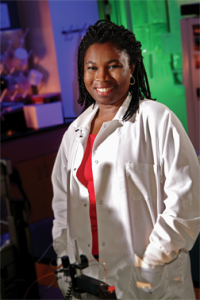
Director, Center for Structural Biology, McKnight Brain Institute; professor of biochemistry and molecular biology, University of Florida
By investigating the role of biological structure in viral infection, Mavis Agbandje-McKenna aims to understand how structure-function relationships drive biological processes. Although she is now focusing on engineering the viral capsid for gene therapy, she began with molecular-level Ph.D. work at the University of London, where she characterized a novel group of anti-tumor agents that can intercalate DNA (fitting between base pairs to inhibit replication). In postdoc fellowships at Purdue and Warwick, she studied structure and function in single-stranded DNA parvoviruses as well as the Geminiviridae and Microviridae. Agbandje-McKenna joined the faculty of the University of Florida in 1999. In Gainesville her work on ssDNA viruses has expanded further to include the newly discovered TT (Torque Teno) virus.
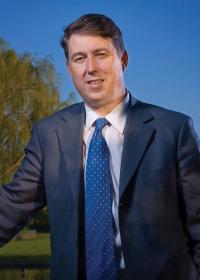
Director, Center for Green Chemistry and Green Engineering; Teresa and H. John Heinz III professor in the practice of chemistry for the environment, Yale University
Paul Anastas trained as a synthetic organic chemist, earning his Ph.D. at Brandeis. Focusing on sustainability science and moving among academia, industry and government, he established the field of green chemistry, articulating its principles in books that include Benign by Design and Green Chemistry: Theory and Practice (John Warner, co-author). A Yale faculty member since 2007, he served in the White House Office of Science and Technology Policy 1999-2004. He served as the Assistant Administrator for the Environmental Protection Agency’s Office of Research and Development and Science Advisor to the EPA beginning in 2009, returning to Yale in 2012.
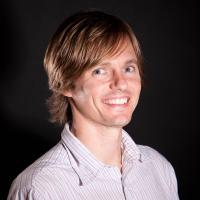
Assistant professor of mechanical and aerospace engineering University of Florida
Tommy Angelini’s Bio and Soft Matter Lab at the University of Florida hopes to discover how system-level properties of large groups of cells — epithelial layers, endothelial networks and bacterial biofilms — emerge from microscopic dynamics.This is the latest focus of a research career that has combined molecular biophysics with cell mechanics, including the study of physical interactions between the cornea, the eyelid, and contact lenses mediated by synthetic and biological macromolecules. Angelini received his Ph.D. in physics from the University of Illinois at Urbana-Champaign and moved into cell mechanics and the physics of bacterial biofilm growth during postdoctoral research in the Weitzlab at the Harvard School of Engineering and Applied Sciences before joining the UF faculty in 2010.
Managing editor, The Open Notebook; freelance journalist
Christie Aschwanden is an independent journalist, essayist and science nerd. She writes a health column for the Washington Post and blogs about science at LastWordOnNothing.com. She's the managing editor of The Open Notebook, a contributing editor for Runner's World and contributor to a variety of publications, including The New York Times, Discover, Smithsonian, Slate, Men's Journal, Mother Jones, NPR.org, and O, the Oprah magazine. She was a National Magazine Award finalist in 2011 and a Pulitzer Center for Crisis Reporting fellow in 2007. She lives on a small farm in rural western Colorado with her winemaker husband and raises heritage poultry in her spare time. Find her on Twitter @cragcrest.
Writer and editor, Nature
After working as a AAAS Mass Media Fellow for ABC News, Monya fled broadcast journalism for a high school classroom, where she taught biology, chemistry and math before venturing back into print journalism. She has written for The Economist, MIT's Technology Review, New Scientist, The Scientist, Wired and other publications. She currently works as a writer and editor for Nature Publishing Group.
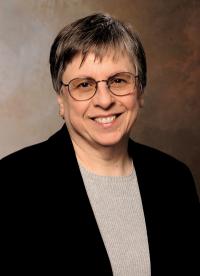
Presidential endowed professor of community dentistry and behavioral science; director of human research, Center for Smell and Taste, University of Florida
Linda Bartoshuk came to the University of Florida in 2005 from the surgery department at the Yale University School of Medicine. She is interested in genetic variation in the sense of taste as well as pathologies of taste. A member of the National Academy of Sciences, Bartoshuk has served as president of the Association for Chemoreception Sciences (AChemS), the Eastern Psychological Association and the Behavioral Neuroscience and Comparative Psychology Division of the American Psychological Association. In 1998, she received the AChemS Award for Outstanding Achievement in the Chemical Senses. This year she was recognized by the Association for Psychological Science with its highest honor, the William James Lifetime Achievement Award for basic research.
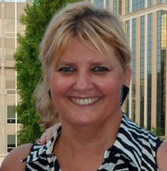
Blogger & editor, National Center for Biotechnology Information (NCBI) at the National Institutes of Health
Hilda Bastian explores the comedic possibilities of clinical epidemiology at her cartoon blog, Statistically Funny. She is a blogger at Scientific American, and an academic editor at PLOS Medicine. Her day job and current Ph.D. work are related to the serious side of analyzing and communicating research on clinical effectiveness. She also has an ongoing interest in the science of communication, and was the founding Coordinating Editor of the Cochrane group on communication between 1997 and 2001. Currently, Hilda is the editor responsible for PubMed Health at the National Center for Biotechnology Information (NCBI), in the National Library of Medicine, NIH. PubMed Health is a clinical effectiveness resource bringing together systematic reviews and information for consumers and clinicians. Previously, Ms. Bastian headed the Health Information Department at the German Institute for Quality and Efficiency in Health Care (IQWiG) (2004-2011). She had been a health consumer advocate in Australia in the 1980s and 1990s before becoming a full-time editor and researcher.
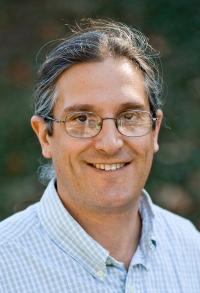
Director of the Program of Vertebrate Paleontology, Florida Museum of Natural History
Jon Bloch received his Ph.D. in geological sciences from University of Michigan and spent a year there as an NSF-funded postdoctoral fellow, followed by two years as a research fellow at the South Dakota School of Mines and Technology. In 2004 he joined the faculty at the Florida Museum of Natural History. A Research Foundation Professor at the University of Florida, Bloch studies fossil vertebrates from the Cenozoic with an emphasis on addressing questions surrounding the first appearance and early evolution of the modern orders of mammals. Field research has taken him to the Cenozoic of Wyoming and Montana, the Cerrejón and Bogotá formations of northern Colombia, and the exposures along the Panama Canal. Bloch has been an associate editor of the Journal of Human Evolution, is on the editorial board of the Journal of Mammalian Evolution and is co-editor of the journal Paleobiology.
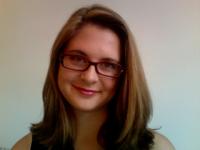
Editor, EverydayHealth
Mollie Bloudoff-Indelicato is an editor at Everyday Health and freelances for National Geographic. She has worked for Scientific American and Climatewire. Bloudoff-Indelicato earned a master's degree from the Columbia University Graduate School of Journalism with concentrations in photo documentary storytelling, science journalism and radio reporting. She loves em dashes, '80s music and brain parasites.
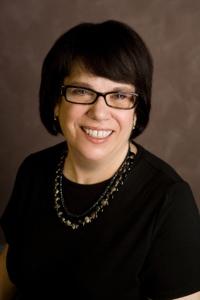
Author; professor, University of Wisconsin-Madison
Deborah Blum is a Pulitzer-prize winning science writer, a chemistry blogger for Wired, and the author of five books, mostly recently the best-selling The Poisoner's Handbook. She writes for publications ranging from The New York Times to Tin House magazine and she is a professor of journalism at the University of Wisconsin-Madison.
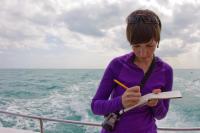
Articles editor, Popular Science
Jennifer Bogo is the articles editor at Popular Science, where she orchestrates coverage on topics ranging from medical breakthroughs and space exploration to advances in alternative energy and robotics. Stories she edited have won a National Magazine Award and been included in The Best American Science Writing and Best American Science and Nature Writing anthologies. She’s appeared on radio and television programs, including NPR, MSNBC, CNBC, NBC Nightly News, and Fox Business, to discuss topics such as green design, asteroid defense, and solar storms. She's also traveled to research stations from the Arctic to the Antarctic to write science stories herself.
Here’s how to pitch Jennifer:
I edit feature stories for Popular Science. Our sweet spot is the intersection of science and technology, and we especially want future-forward (but not back-of-the-napkin), solutions-oriented angles. We cover a broad range of topics and also look for various formats, including narratives, short profiles, and smart packages. Writers who can come up with compelling, timely angles for a package story (think “25 Geek Road Trips” and “How Neuroscience Will Fight 5 Age-Old Afflictions”) and write concisely will always find work with us. If you want to break into Popular Science, or have pitches on discrete pieces of research or trends, sign up for time with Susannah Locke, who will also be in this session.
Contact: jennifer.bogo@bonniercorp.com
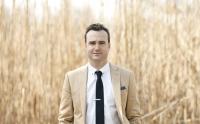
Men's Journal
Stayton Bonner is an associate editor at Men's Journal magazine. He oversees stories about topics ranging from commercial space exploration to top-flight scotch. Previously, he’s worked at publications including Outside, GQ, and Details.
What he looks for in a pitch:
In a pitch from an unknown writer, I look for brevity. The pitch should be no longer than a
couple paragraphs. You need to be able to sell your idea in a sentence. It should also be well
written—you can tell in a couple sentences whether someone is good with words. The pitch
should demonstrate the writer has studied the subject matter—specific details, names, facts,
figures, etc. It should underscore why this is an important subject to cover right now (or in the
next few months.) And finally—especially important for a new writer—the pitch should explain
why this person is the best choice for writing the story. It helps if you're covering something in
your backyard—a geographic region or subject matter of which you are the sole writing
authority.
Contact: stayton.bonner@mensjournal.com

Science editor, MSNBC.com
As NBC News Digital's science editor, Alan Boyle runs a virtual curiosity shop of the physical sciences and space exploration, plus paleontology, archaeology and other ologies that strike his fancy. Since joining NBC News Digital (a.k.a. MSNBC.com) in 1996, Boyle has won awards from the National Academies, the American Association for the Advancement of Science, the National Association of Science Writers, the Society of Professional Journalists, the Space Frontier Foundation, IEEE-USA, the Pirelli Relativity Challenge and the CMU Cybersecurity Journalism Awards program. He is the author of "The Case for Pluto," a contributor to "A Field Guide for Science Writers," the blogger behind Cosmic Log — and an occasional talking head on the MSNBC cable channel, NBC's TODAY and Nightly News. During his 36 years of daily journalism in Cincinnati, Spokane and Seattle, he’s survived a hurricane, a volcanic eruption, a total solar eclipse and an earthquake. He has faith he'll survive the Internet as well. -MSNBC.com
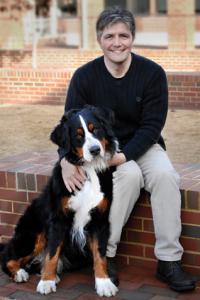
Professor of genomics, Department of Molecular Biomedical Sciences, College of Veterinary Medicine, North Carolina State University
Trained at the University of Liverpool, Matthew Breen launched a career in molecular cytogenetics in the UK and Australia, where he helped develop techniques to analyze the genomes of horses and humans. After extending his comparative genomic studies to dogs, he relocated his lab to NCSU’s College of Veterinary Medicine as part of the school’s genomics initiative in 2002. He now co-directs the clinical studies core within the NCSU Center for Comparative Medicine and Translational Research and serves on the board of the Canine Comparative Oncology and Genomics Consortium. He spends much of his time working with dog breeders who, he reports, are broadly committed to reducing the burden of genetic disease in purebred dogs by careful controlled breeding.